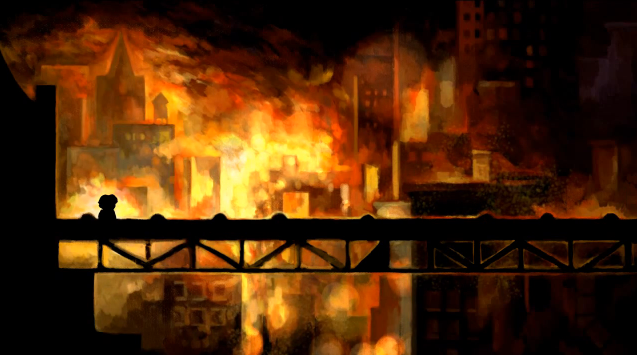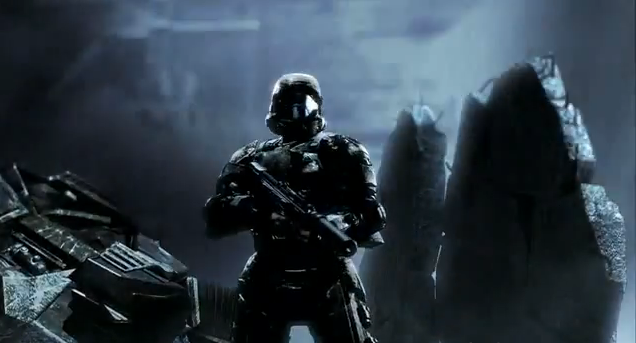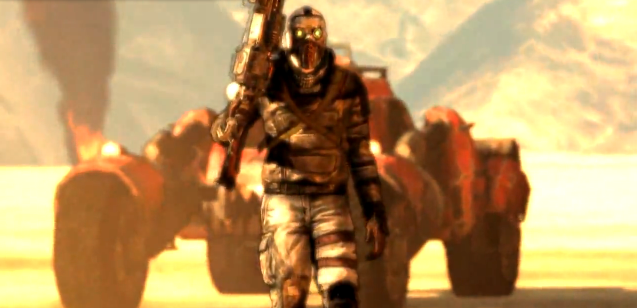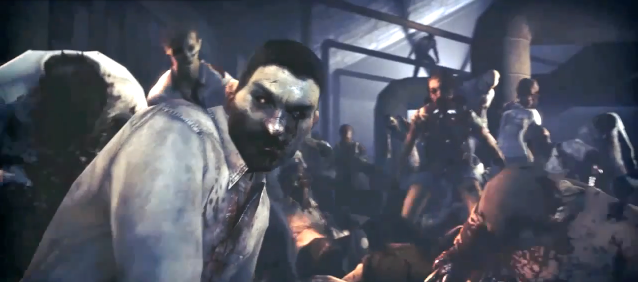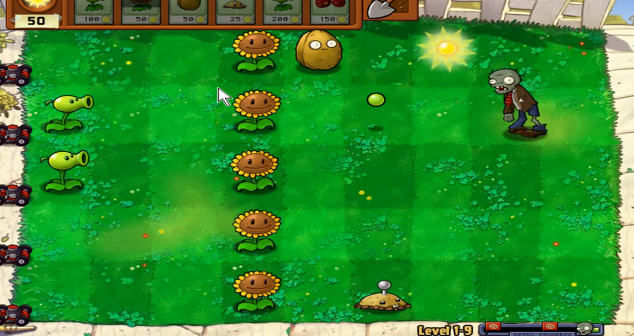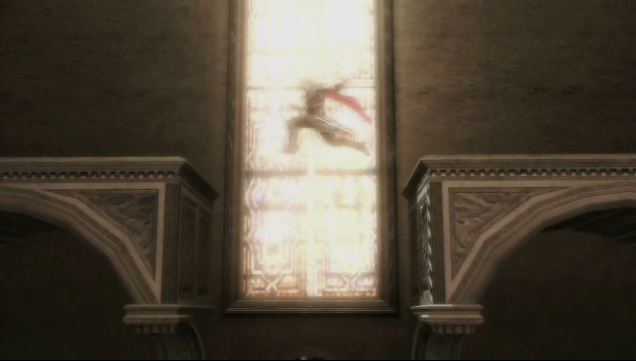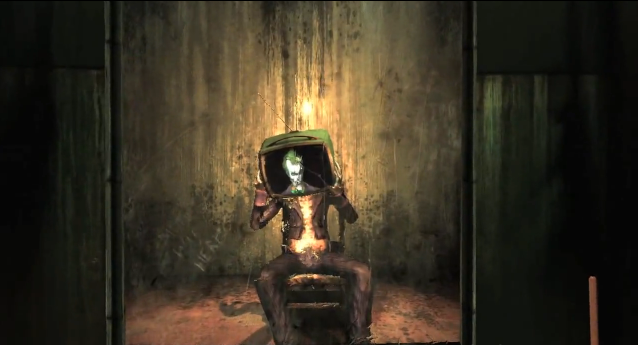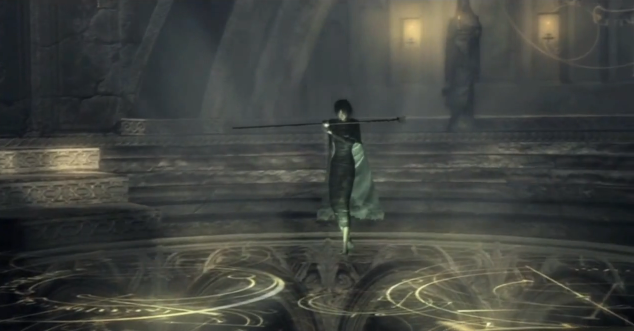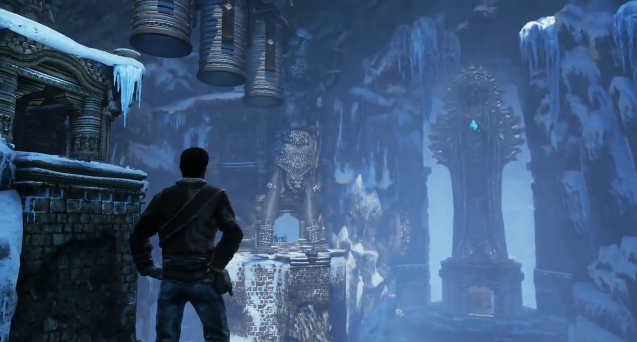Best of 2009: Games
2009
10
Braid
Braid is fortunate to have a creator as clever as Jonathan Blow, because without his creative visual style and challenging gameplay mechanics, Braid would be among of the endless good-intentioned platformers that litter Flash-game websites with nothing new to say. Braid takes liberally from its inspirations, particularly Mario with green pipes and piranha plants intact, and it’s time traveling mechanic could have easily been a gimmick. But Blow creates his puzzles with methodical precision, each zone is built to mess with the time-travel ability (which allows the player to rewind time with zero penalty, and other abilities later on) more and more so that each time you think you’ve got a handle on how it works, Blow pulls the rug from under you. Most games become complacent at a point and don’t try to surprise the player at a certain point, Braid on the other hand believes in a much more classical aesthetic where new tools and challenges appear to the end. Much of the time Braid places all it’s pieces in front of you and the challenge is figuring out how they all work together. Other times the puzzles are illusive and require a great deal of creativity. Braid goes as far as to use the legendary “the princess is in another castle” line in its entirety, but Blow attempts to use the pre-world buffer zones as narrative opportunities to expand the basic Mario plot with heavy-handed storybook plotting that reads more like a teenage diary than a sincere quest for love. The painful storybook writing style is at least curbed by the elegant storybook art style that really defines Braid. Backgrounds and foregrounds move with grace like an animated oil painting where individual brush stokes can be seen but act as though they are just being placed by the artist. In the on-going debate of “are games art?”, few games offer as much proof as Braid and its creator.
played on Mac; developed by Jonathan Blow.
9
Halo 3: ODST
After three epic blockbusters featuring Master Chief, Halo had deservingly earned the reputation as frat-house favourite with its brutal, competitive multiplayer. ODST scales the series back, proving that a thoughtful tale can be told within this universe, one that doesn’t feature the mascot of the series. Bungie took a big risk removing their flagship hero based on the faith that the series could stand on its own without Master Chief. They were right. Told out of chronological order, the game follows “The Rookie” who searches for his team in an evacuated African city after a large Covenant attack. The open world concept that has been infesting the industry like a plague lately actually plays well here. A heightening sense of isolation and loneliness is created as The Rookie fights aliens in the dark, echoing through the streets accompanied by a more subtle, minimalist score. Flashback sequences offer up the big Halo set pieces, but also show the importance of the unit and the bond between the soldiers, rather than the one man army of Master Chief. The mechanics of the game are archaic, showing little improvement from Halo 3, but as a smaller, more focused game, it proves that Halo can be more than just another mindless blockbuster.
played on Xbox 360; developed by Bungie.
8
Call of Duty: Modern Warfare 2
The annual Call of Duty tradition has started to earn some deserving backlash. Developed by the original helmer Infinity Ward, the game picks up after the end of Modern Warfare creating a spiderweb of conspiracy and political tension that becomes incomprehensible within the first few missions. Worse still, is that Modern Warfare 2’s multiplayer has expanded upon the dangerously unbalanced perk system that revolutionized Modern Warfare to an insane degree. Killstreaks are over-the-top, perks are unbalanced, and the level system is punishing to newcomers. So while Modern Warfare 2 is certainly the worst Call of Duty Infinity Ward has made, it is still a blockbuster action game of unequalled quality. The single-player campaign might make no sense, but it’s brilliantly paced and scripted action is one of a kind in this industry. Taking clear inspiration and cues from Michael Bay films like The Rock, Modern Warfare 2 makes no intention to play realism to any degree that interferes with immersion or fun. The FPS genre has become incredibly boring, even modern combat games have difficulty standing out, Infinity Ward succeeds by bouncing around the globe with missions at arctic bases which lead to high-speed snow mobile chases, tense drives through Middle-Eastern cities where insurgents and civilians are indistinguishable, and combat in American suburbs through homes, a burger joint, and terrifyingly moving through the streets at midnight after electronics have been knocked out to the point of helicopters falling like rain. What Modern Warfare 2 lacks in subtlety it makes up for in exceptionally scripted action, given that this franchise is dictating how action games will look for the years to come, we can only hope they look are sharp as this game.
played on Xbox 360; developed by Infinity Ward.
7
Borderlands
Led by Randy Pitchford, Gearbox is a studio that came from a lot of different places, one of those being 3D Realms in its early days on Duke Nukem Forever. Pitchford and fellow collaborator Brian Martel have finally returned to the outrageous Duke-style antics of their 3D Realms days with Borderlands, a game of obnoxious style and bizarre gameplay ambitions. Spending most of its existence experimenting with RPG in FPS games with the Brothers In Arms series, Gearbox has finally found the right balance between the two. Touted as a Fallout 3/World of Warcraft hybrid, Borderlands looked like an early ambitious failure, however it seemed like everything came together at the eleventh hour. The game is designed for up to 4-player co-op and is significantly less exciting playing solo, although it’s not unbearable. The landscapes are barren in a post-apocalyptic style, but have an energy and excitement channeled through the cel-shaded graphics and Mad Max inspiration. These barren wastelands are good for vehicles but are often empty enough to get bored in, unless with a friend or two. Borderlands wacky array of weapons which are colour-classed like WoW make the game addicting in the same way where every chest begs to be opened to reveal a moderately superior rifle, while the simplistic leveling system shows its depths once you begin to branch out to a specific field of expertise and have a friend to cover your weaknesses. Borderlands is a huge adventure, one that can sometimes end up on the wrong side of MMO-grinding and quest fetching, but with it’s continued support from Gearbox and healthy integration of RPG stats with typical FPS gameplay, Borderlands is an RPG nowhere near as deep as Demon’s Souls, but probably twice as addictive.
played on Playstation 3; developed by Gearbox.
6
Left 4 Dead 2
Despite all the great things they have done for the industry, it was easy to be bitter towards Valve in 2009, after once again staying tight-lipped about Episode 3, and then announcing Left 4 Dead 2 would be released only a single year after Left 4 Dead. Are Left 4 Dead 2’s seemingly minor tweaks worthy of a full retail sequel? Yes and no, but Valve has been clear on their on-going support for both titles and have lived up to their promise. Left 4 Dead 2’s variations, most notably the inclusion of melee weapons alters the game to significant degrees. It doesn’t really rewrite the rules, but melee weapons make close quarters combat more efficient, tone down friendly fire, and allow for deeper strategy than mandatory sidearms. A more intelligent AI system allows for The Director to create more random and challenging ambushes for the hordes as well as rewarding a solid team for taking difficult routes, unfortunately these AI improvements can’t save the friendly AI. Left 4 Dead 2’s chapters are each unique and memorable in their own regard with frequent set piece survival moments at the end of chapters (an abandoned music stadium being the best) where melee weapons are indispensable. Though light on plot, the game is able to use context-sensitive situations for brilliantly scripted dialogue between the characters making fighting over who gets to play as Ellis or Coach as integral to the game as the zombie slaying itself.
played on Mac; developed by Valve.
5
Plants vs. Zombies
Casual games are huge today, in no small part thanks to smartphones, but they are rarely exceptional simply because almost every casual genre has been done to death. Case in point: tower defense. Tower defense games are easy to develop, easy to play, but hardly engrossing. However, Plants vs. Zombies gets a lot right that others don’t. Instead of focusing exclusively on the strategy and challenge of the mechanics, Plants vs. Zombies reels in players with its charming art style. Playing on the growing interest in comedically mashing up absurd nouns like pirates, ninjas, or aliens, Plants vs. Zombies has the player defending their back door from the lumbering undead using a living garden that wouldn’t look out of place on Treehouse television. The creepy-yet-childish music plays soothingly, keeping this challenging game casual, while the game ramps up its difficulty at quick paces offering varying game modes to keep things fresh. The uniqueness of the visuals make the game appear shallow, which it is not in the slightest. Varying play fields emerge demanding strategies to be re-written and an overwhelming number of plants to choose from to combat and overwhelming number of zombies makes the game quite difficult. What’s best about Plants vs. Zombies is it’s casual, fun attitude towards pop-culture and zombies, combining the two with hilarious results in a Michael Jackson zombie (now edited as a Disco Stu lookalike) and a cranky elderly zombie.
played on Mac & iPhone; developed by PopCap.
4
Assassin’s Creed II
The first Assassin’s Creed disappointed pretty much everyone. It had tons of beautiful scenery to chew and enough history to lean on, but its gameplay was weak and the variety was minimal. Assassin’s Creed II is an exceptional improvement that refines more than it reinvents. Ubisoft was smart enough to see a winning formula in Assassin’s Creed and chose to wipe the slate with its characters, but keep the gameplay structure and improve it. These improvements are seen pretty much everywhere. Sure, the attempt at RPG elements is pretty undercooked, the game economy is broken, and the gameplay is still simplistic — but Assassin’s Creed II offers up an overwhelming array of activities in a fully realized, lush world that painstakingly recreates Renaissance Italy including many of the famous players of that period. Part history lesson, part science fiction mystery, the story mythology expands on the predecessor twofold, successfully making a compelling universe out of a lame concept.
played on Xbox 360; developed by Ubisoft Montreal.
3
Batman: Arkham Asylum
Has it really taken this long for us to get a proper Batman video game? Arkham Aslyum, perhaps wisely, does not invent anything new, instead it pulls elements from other great games that relate to the aesthetic of the Dark Knight. Combining elements of Asassin’s Creed, Splinter Cell, Bioshock, and more, Arkham Asylum allows you to prowl in the darkness as Batman who stalks his victims, eliminates them quickly, and sets terror in the hearts of the other thugs waiting for your foot to their face. The open-world encourages exploration but smartly limits your access based on your gadget selection. There are no invisible walls or blatant zones like Assassin’s Creed, just the lack of the proper tool. Using an upgraded Unreal Engine 3, Arkham Asylum looks terrific, it has the same terrifying gloominess that invaded Bioshock, and it’s characters all appear in glossy detail. Like Assassin’s Creed, the fight mechanics are painfully simplistic, but unlike Assassin’s Creed, they are immensely satisfying no matter how long you play. The game succeeds as a traditional stealth game on its own, but as a Batman game, it exceeds expectation marking the first superhero game where you truly feel like the superhero you portray. Batman is the pivotal superhero for a video game because he can be hurt by bullets and has no easy defense, only his smarts and equipment can give him the upper hand, which translates beautifully to video game format.
played on Playstation 3; developed by Rocksteady.
2
Demon’s Souls
The biggest surprise of 2009 came from Demon’s Souls, a Japanese RPG that blends the definitions of single-player and multi-player into one. Although the game world is your own, when connected to PSN, the game will not allow you to pause, ghosts of other players can sometimes be seen trekking nearby corridors, bloodstains of other players act as indicators to tough challenges ahead, and messages left on the ground by others offer insight into tough puzzles. It’s a collaborative world where players actually use the communication tools the developers created, unlike most communities. But that’s because Demon’s Souls is so damn hard. The immense challenge in Demon’s Souls is circumvented by these social tools where players who rarely meet directly attempt to help another along, because like a real journey of this difficulty, it can’t be achieved alone. Though PvP situations are a rare, minimal part of the game, offline players are still truly missing out on the full experience. Demon’s Souls also manages to balance its difficulty to reward ingenuity rather than to feel outright cheap. Smart players can equip themselves strategically against bosses to come out with barely a scratch, while other players might deem the boss to be practically impossible. The world within Demon’s Souls is one that never becomes stale, a major problem in traditional RPGs, no matter the number of available quests. The world constantly shifts depending on player performance and other elements out of the players control. These changes not only alter the world geography, but change enemies as well creating a constantly dynamic experience with an unpredictable difficulty level making Demon’s Souls a prime example of how big risks can pay off even bigger.
played on Playstation 3; developed by From Software.
1
Uncharted 2: Among Thieves
Following up Uncharted: Drake’s Fortune, a technical marvel that needed a bit more polish, Uncharted 2: Among Thieves doesn’t settle for merely polishing the gameplay and delivering an exciting campaign, it continues to build on the amazing technology created by its predecessor. Unbelievably dense, detailed, and vibrant environments are the true star of Uncharted 2 from urban warzones in Nepal to arctic mountains; the array of landscapes are as awesome to ogle at as they are to traverse. In a climate of endless free-roam acrobatic games, Uncharted 2’s improved gameplay mechanics make it the easy champion of this style. Interactive environments are easy and enjoyable to climb, responding accurately to your jumps and movements with fluid animation. Uncharted 2 has all the big set piece moments you’d expect, but what truly defines the game is the writing. In a sort of appropriation of Tomb Raider and Indiana Jones, Uncharted 2 is a typical swash-buckling adventure but with snappy dialogue and colourful characters that aren’t drawn in wide strokes with cheesy dialogue and vague ambitions, this is feature film quality stuff. Uncharted 2 comes equipped with an online multiplayer which may seem tacked-on to a skeptic, and with so many games doing it these days, it’s easy to be fooled. But surprisingly, the exceptionally fluid animation and responsive gameplay mechanics make the multiplayer exciting and unique where covering above and below is as important as your flank. Uncharted 2 boasts one of the most memorable single-player campaigns in years and adds on terrific multiplayer to boot.
played on Playstation 3; developed by Naughty Dog.
Honourable Mentions
As a person who has had little interest in arcade fighting games since the Dreamcast bit the dust, Street Fighter IV was a welcome surprise in 2009. I might not be as polished as most Street Fighter aficionados, but the games general sense of balance, amazing art style, and great levels make it a fantastic entry in the legendary franchise.
Finally defying doubters wrong, the Playstation 3 saw a terrific year in 2009 which was essentially kickstarted by Killzone 2. After Killzone on the PS2 ended up being a dull, lifeless letdown, Killzone 2 proved to be an intense technical marvel. The washed out colour scheme rivals Gears of War in its dreariness with similar brutal combat that translates the Gears of War shoot-and-cover mechanic to the first person. While the controls are fairly complicated and sometimes pretty awkward, the immersion of Killzone 2 is what made it work.
Arcade games took some leaps this year including Battlefield 1943 which was an “experiment” by EA that payed off huge. Arcade games were at one point largely old-school games for sale at a modest price and downloaded at a modest size. 1943 creates a modern online shooter that is light-weight, incredibly easy to pick up, and tons of fun to play. Scaling down the combat and maps of Battlefield 1942, this new title simplifies everything to dangerous degrees, but somehow keeps the insane arcade fun from the original game. Connection issues were a moderate demerit for an otherwise brilliant online shooter that was twice as enjoyable as Modern Warfare 2 for only $15.
